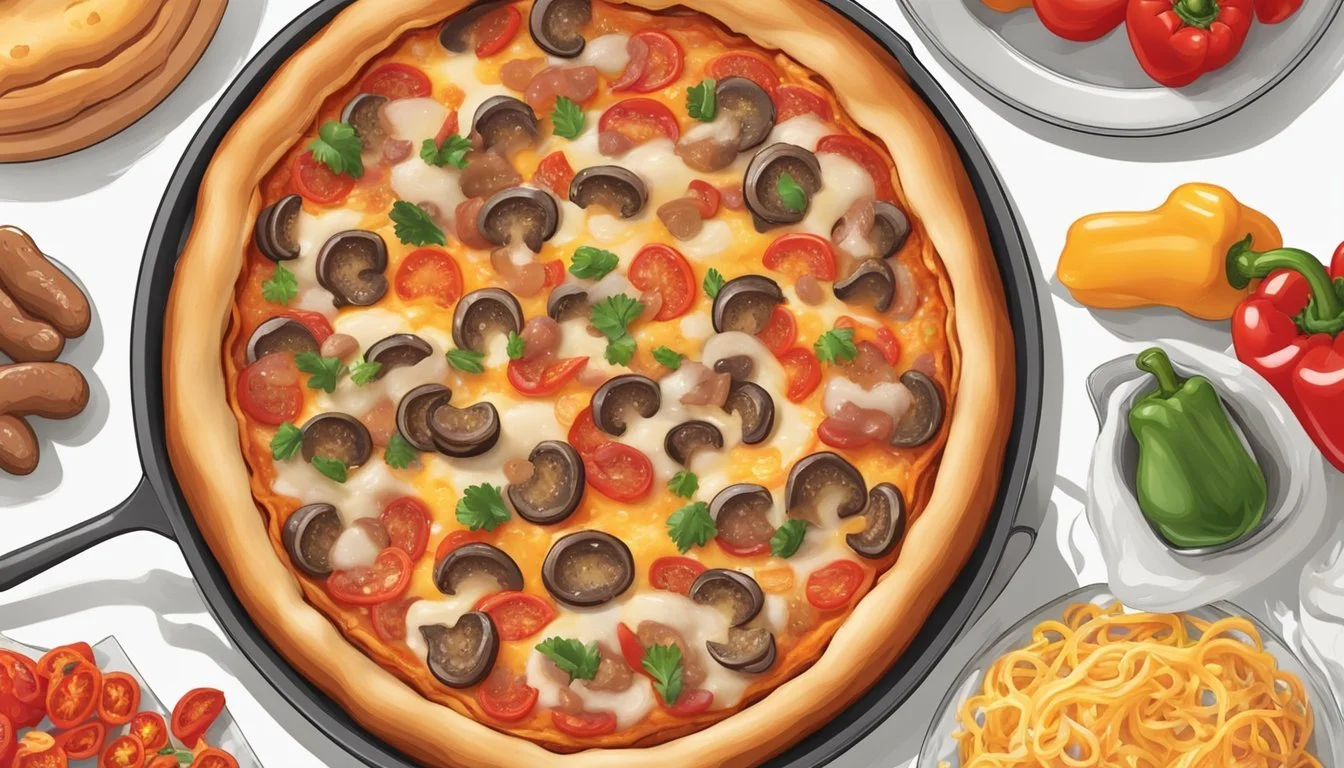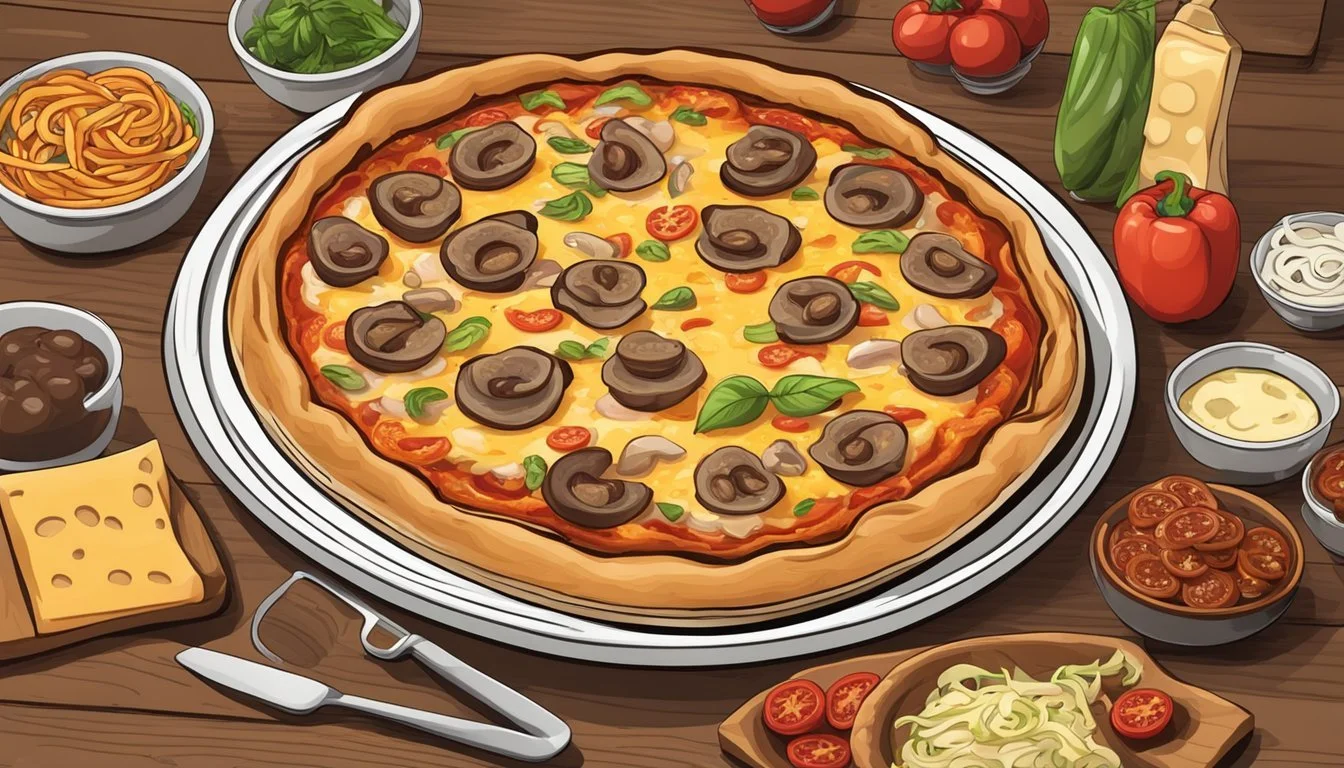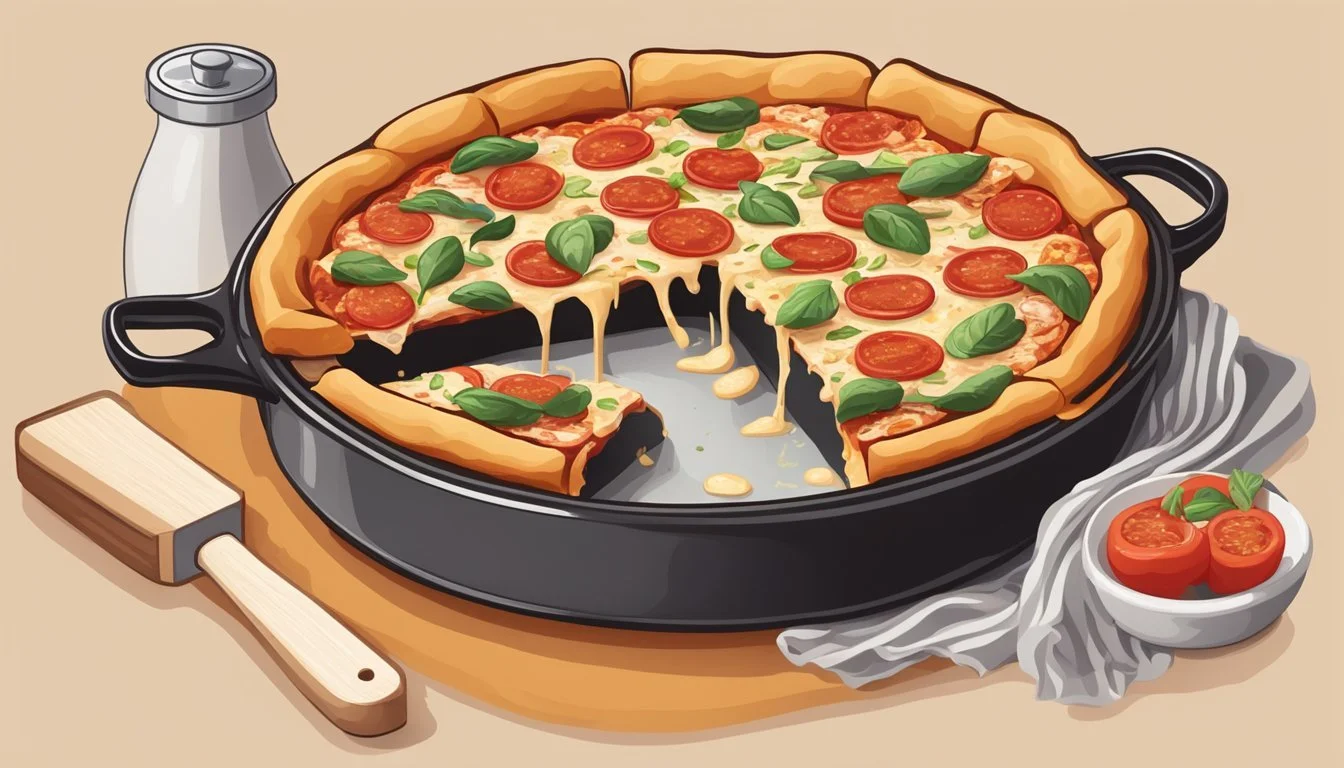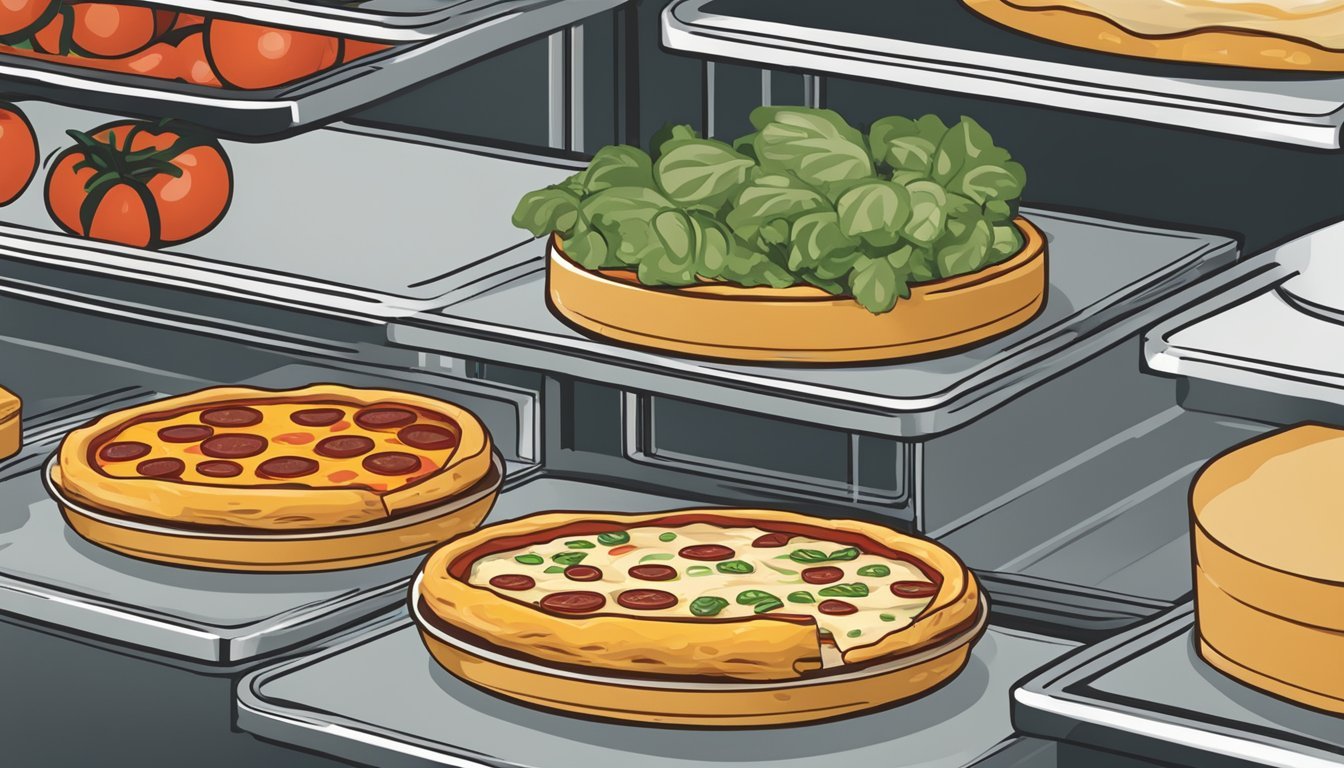How Long Does Deep Dish Supreme Pizza Last?
Storage Tips and Guidelines
Deep dish supreme pizza, with its thick, buttery crust and layers of savory toppings, is not only a delicious meal but also one that can be enjoyed over multiple days if stored correctly. A properly stored deep dish supreme pizza can last in the refrigerator for up to 3-4 days. This ensures that the flavors remain intact and the toppings stay fresh, making it a convenient option for meal prep or leftovers.
When considering how long deep dish supreme pizza lasts, it’s essential to account for proper storage techniques. Pizza should be kept in an airtight container or wrapped tightly in plastic wrap or aluminum foil. This helps maintain its moisture and prevents the pizza from drying out while in the fridge.
For those who can’t consume it within this timeframe, freezing is a viable option. By wrapping the slices individually and storing them in freezer-safe containers, deep dish supreme pizza can last for up to 2 months in the freezer. This method allows pizza lovers to enjoy their delicious meal well beyond the initial baking day.
Understanding Deep Dish Pizza
Deep dish pizza is characterized by its thick crust, layers of cheese, abundant toppings, and generous application of sauce. It's notably distinct from thin crust varieties and is often associated with Chicago.
History of Deep Dish Pizza
Deep dish pizza traces its origins to Chicago during the mid-20th century. The first well-documented instance came from Pizzeria Uno, opened in 1943 by Ike Sewell and Ric Riccardo. They designed a pizza distinguished by its dense, pastry-like crust and inverted layers, with cheese at the bottom and sauce on top, which set it apart from traditional Italian thin-crust pizza.
This new take on pizza quickly became a mainstay in Chicago's culinary scene. Soon, numerous other pizzerias started to adopt and adapt the style, turning the Chicago-style deep dish into an iconic dish that symbolizes the city.
Characteristics of a Deep Dish Pizza
The unique thick crust forms the foundation of a deep dish pizza. Unlike thinner counterparts, the crust is more akin to a buttery, flaky pastry that rises up the sides of a deep pan, creating a bowl-like structure.
Cheese and other toppings are laid on first, followed by a robust tomato sauce on top. This reverse layering helps keep the cheese from overcooking. Common toppings include sausage, pepperoni, and vegetables. Due to its substantial structure and ingredients, a slice of deep dish is significantly heavier and more filling than most other pizza types.
Comparing Deep Dish to Other Pizza Types
When compared to thin-crust pizzas, deep dish offers a stark contrast in both texture and taste. Thin crust pizzas are typically crisp and light, with toppings and sauce applied more sparingly, allowing for a balanced bite.
Vegetarian options in thin-crust pizzas are often lighter, while deep dish vegetarian pizzas are heartier and more indulgent. The thick, buttery crust of a deep dish holds up well against rich and abundant toppings, making it a meal in itself.
In essence, while both types of pizzas have their own charm and fan base, deep dish is noted for turning a simple pizza into a robust and highly indulgent dining experience.
Key Ingredients of Supreme Pizza
A Supreme Pizza stands out due to its hearty, flavorful ingredients and balanced combination of textures. Critical components include a robust crust, a variety of rich toppings, and a well-seasoned sauce.
Crust Essentials
The foundation of a Supreme Pizza is its crust, which is typically made using flour, yeast, salt, and water. For a deep dish version, olive oil is often added to the dough to enhance richness and create a golden, crispy exterior. The dough should be well-kneaded to develop gluten, providing structure and chewiness. Pressing the dough into a cast iron pan or similar deep dish ensures a thick, sturdy base that can support generous toppings.
Toppings and Variations
A Supreme Pizza is known for its abundant and varied toppings. Common choices include pepperoni, Italian sausage, sliced onions, bell peppers, mushrooms, and black olives. Each of these ingredients contributes unique flavors and textures. For added depth, toppings like garlic, red pepper flakes, ham, or even basil can be added. The variety in toppings makes the pizza substantial and flavorful.
The Role of Sauce and Seasonings
The sauce for a Supreme Pizza typically consists of tomato sauce seasoned with garlic, oregano, and basil. The sauce should be spread evenly to ensure every bite is flavorful. Sometimes, red pepper flakes are added for a hint of spice. Mozzarella cheese is the standard choice for a creamy, melty texture but can be combined with other cheeses like Parmesan or provolone for additional richness.
These components together create the distinctive taste and texture of a Supreme Pizza, ensuring a satisfying and multifaceted eating experience.
Preparation and Cooking Techniques
Creating a deep dish supreme pizza involves carefully preparing the dough, layering the ingredients properly, and using the right oven techniques. Attention to detail in each step ensures a delicious and satisfying result.
Making the Dough
To make the dough, start by combining warm water, yeast, and sugar in a large bowl. Let the mixture sit until it becomes foamy. Next, add all-purpose flour and a small amount of salt. Stir until a dough forms, then knead until smooth.
Allow the dough to rise in a warm place until doubled in size. Rising time can vary, but it generally takes about one to two hours. The dough should be thick and slightly sticky to touch.
Assembling Your Deep Dish Pizza
Begin by oiling a cast iron pan with extra virgin olive oil. Place the dough in the pan and press it to cover the bottom and sides, forming a crust.
For a supreme pizza, layer cheese directly on the dough to prevent it from getting soggy. Add meats like pepperoni or sausage, then vegetables such as bell peppers and onions. Top with a thick layer of your chosen pizza sauce.
Proper Oven Use
Preheat the oven to 450°F to achieve a crispy crust. Once preheated, place the cast iron pan on a baking sheet to catch any drips. Bake for 25-30 minutes.
Check for a golden crust and melted cheese to know it’s done. Allow the pizza to cool for about 10 minutes in the pan before slicing. Reheating leftovers at 300°F for 15-20 minutes helps retain the texture and taste.
Storing Deep Dish Pizza
Proper storage of deep dish pizza ensures quality and food safety, whether it's homemade or store-bought. Methods differ based on the duration you plan to store it.
Short-Term Storage Tips
For leftovers, store deep dish pizza in the fridge for up to four days. Begin by wrapping each slice tightly in plastic wrap to maintain consistency and flavor. After wrapping, place the slices in an airtight container to prevent moisture loss and exposure to odors.
If the pizza has been at room temperature for more than two hours, it should be discarded to avoid food safety risks. Labeling the container with the storage date can help keep track of the freshness.
Long-Term Freezing Methods
For long-term storage, deep dish pizza can be frozen for 1-2 months. Plastic wrap each slice individually before placing them in an airtight container or a resealable plastic bag. This step is crucial to avoid freezer burn and maintain the pizza's quality.
Ensure the freezer temperature is consistently at 0°F (-18°C) or lower. Before freezing, consider par-baking homemade pizza crusts to improve the final texture after reheating. Avoid refreezing thawed pizza to prevent texture degradation and potential food safety issues.
Reheating for Optimal Enjoyment
Reheating leftover deep-dish supreme pizza requires specific techniques to ensure the crust remains crispy and the toppings stay delicious. Different methods like oven reheating, microwave, and using a cast iron skillet can be utilized, each providing unique benefits.
Oven Reheating Technique
Using an oven is one of the most effective ways to reheat deep-dish pizza. Preheat the oven to 350 degrees Fahrenheit to prevent burning the already-cooked crust. Place the slices on a baking sheet lined with parchment or foil. If maintaining moisture is a concern, spray a little water on the slices.
Cover the pizza loosely with another piece of aluminum foil to prevent the cheese from over-melting. Bake for about 15-20 minutes or until the pizza is heated through. This method ensures the crust remains crispy and the cheese is perfectly melted.
Other Reheating Methods
For those without an oven or looking for quicker methods, alternative techniques are available:
Microwave: Place the pizza on a microwave-safe plate and cover with a microwave-safe bowl to prevent the cheese from drying out. Heat in 30-second intervals until warm. This method is fast, though it may result in a softer crust.
Cast Iron Skillet: Preheat the skillet over medium heat. Place the slices in the skillet and cover with a lid. Heat for about 5-8 minutes, ensuring the crust stays crisp while the toppings get warm. This method combines the oven's effectiveness with the microwave's speed.
Each method has its benefits, and choosing the right one will depend on your time and equipment available.
Health Considerations and Nutritional Information
Deep dish supreme pizza offers a robust flavor but also comes with various health considerations. It is important to be aware of its caloric content and potential allergens, especially for those with dietary restrictions.
Caloric Content and Macronutrients
A single serving of deep dish supreme pizza typically contains around 320 to 420 calories, depending on the specific brand and recipe. Most calories come from fat and carbohydrates, with fat content ranging between 15g and 19g per serving.
Saturated fat can be significant, approximately 5g to 5.5g per serving, contributing to about 23% to 28% of the daily value. Such a high-fat content, particularly from cheese and processed meats, may be a concern for those monitoring fat intake for heart health.
Carbohydrates, mainly from the crust, range between 45g and 45.8g per serving. Protein content is about 17g to 19g, offering a moderate amount for muscle maintenance and repair. The pizza’s salt content is generally high, which is crucial to consider for those managing sodium intake.
Allergens and Dietary Restrictions
Deep dish supreme pizza commonly contains several allergens such as gluten from the crust and dairy in the cheese. Gluten and dairy-sensitive individuals must take caution or seek alternative options, like gluten-free crusts or dairy-free cheese.
Processed meats used for toppings may also contain preservatives and other additives that can pose issues for individuals with specific dietary preferences.
For vegetarians, ensuring the pizza has no hidden meat products is essential. Vegan versions might replace traditional cheese and meat with plant-based alternatives. Quality of ingredients varies by brand, so checking labels or ingredient lists is always recommended for ensuring compatibility with dietary needs.
Homemade vs. Pizzeria Deep Dish Pizza
Homemade deep dish pizza offers customization and control over ingredients, while pizzeria versions are crafted by experienced chefs and often feature authentic recipes.
Benefits of Making Pizza at Home
Homemade deep dish pizza is a family favorite, allowing for customization to suit individual tastes. With the ability to control the quality of ingredients, one can ensure fresh and healthier options.
Crafting pizza at home can also be satisfying, as it allows for experimentation with a variety of toppings and recipes. Cost-effectiveness is another benefit; homemade pizza often comes out cheaper than ordering from a pizzeria. Making pizza at home can be a fun and engaging activity for family and friends, enhancing the overall dining experience.
Famous Deep Dish Pizzerias
Pizzerias like Pizzeria Uno in Chicago are renowned for their deep dish pizza, often serving authentic Chicago-style recipes. These establishments have honed their craft over many years, offering consistent quality that many find difficult to replicate at home.
Chicago is home to numerous famous deep dish pizzerias, each with unique approaches to ingredients and baking methods. These pizzerias typically have specialized equipment and experienced chefs that contribute to the distinct flavor and texture of their pizzas. For many, the convenience and expertise found in these pizzerias make them a preferred choice for enjoying deep dish pizza.









